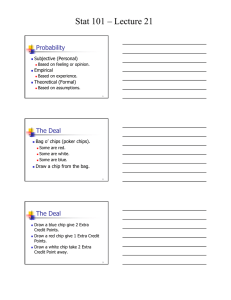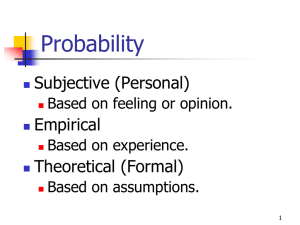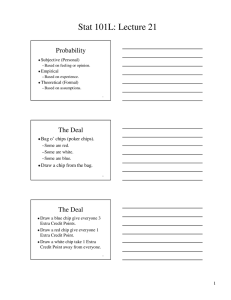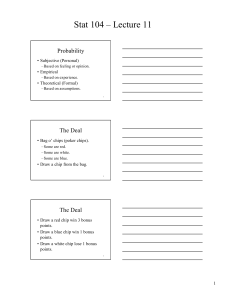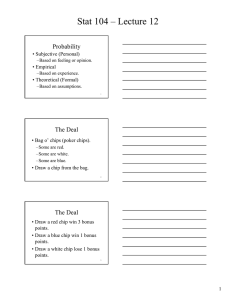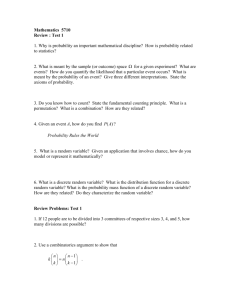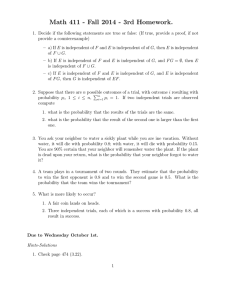Stat 101 – Lecture 20 Probability The Deal • Subjective (Personal)
advertisement
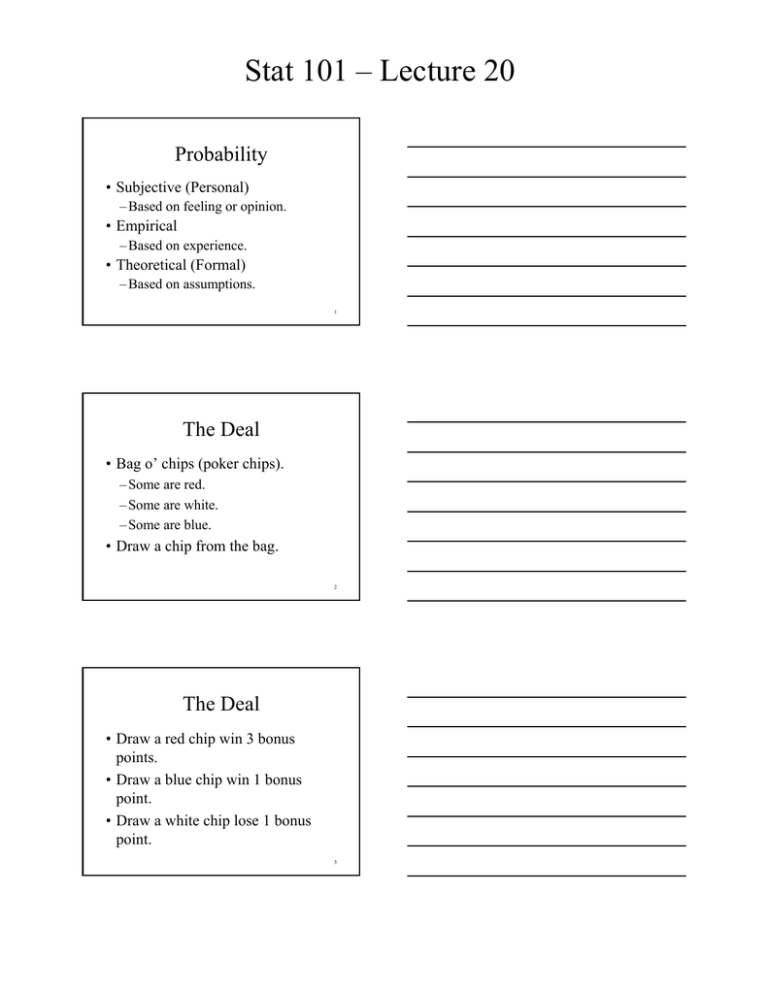
Stat 101 – Lecture 20 Probability • Subjective (Personal) – Based on feeling or opinion. • Empirical – Based on experience. • Theoretical (Formal) – Based on assumptions. 1 The Deal • Bag o’ chips (poker chips). – Some are red. – Some are white. – Some are blue. • Draw a chip from the bag. 2 The Deal • Draw a red chip win 3 bonus points. • Draw a blue chip win 1 bonus point. • Draw a white chip lose 1 bonus point. 3 Stat 101 – Lecture 20 Is this a good deal? • Subjective (personal) probability – Based on your beliefs and opinion. • Empirical probability – Based on experience. – Conduct a series of trials. – Each trial has an outcome (R, W, B). 4 Empirical Probability • Look at the long run relative frequency of each of the outcomes. – Blue – Red – White 5 Theoretical Probability • Look in the bag and see how many – Blue chips – – Red chips – – White chips – • Assumption – Each chip has the same probability of being chosen. Equally likely. 6 Stat 101 – Lecture 20 Law of Large Numbers • For repeated independent trials, the long run relative frequency of an outcome gets closer and closer to the true probability of the outcome. 7 Probability Rules • A probability is a number between 0 and 1. • Something has to happen rule. – The probability of the set of all possible outcomes of a trial must be 1. 8 Probability Rules • Event – a collection of outcomes. – Win bonus points (Blue or Red chip) • Complement rule – The probability an event occurs is 1 minus the probability that it doesn’t occur. – P(A) = 1 – P(AC) 9 Stat 101 – Lecture 20 Probability Rules • Disjoint events – no outcomes in common. • Addition Rule for disjoint events. – P(A or B) = P(A) + P(B) – P(Blue or Red) = P(Blue) + P(Red) 10 Probability Rules • Independent trials • Multiplication rule for independent trials. P(outcome 1st and outcome 2nd) = P(outcome 1st)*P(outcome 2nd) 11 Example • What is the chance that two people in a row win bonus points? P(win 1st and win 2nd)=P(win 1st)*P(win 2nd) P(win 1st) = P(Blue or Red) = P(Blue)+P(Red) P(win 2st) = P(Blue or Red) = P(Blue)+P(Red) 12
